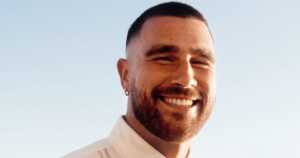What Went Into Creating The Magic Kingdom’s Haunted Mansion?
In every storybook village, in every quaint town, there’s that one house set far back, away from Main Street. Its looming winding driveway ribboning upon a steep hill opens up to a foreboding mansion of the past whose windows, like eyes, peer at any strangling stranger with a gaze that chills the most hardened of people. With all of the cheery fairytale endings, it comes as odd that there would be such a place, like a haunted house, as a Disney attraction, but in all of the locations, there are indeed these strange and foreboding houses. The Haunted Mansion seems like it would be straightforward, but it took much longer than you’d expect and was more difficult to make into an entertaining spectacle for people.

The concept for the Haunted Mansion started in the early 1950s as a part of the Mickey Mouse park that would be next to the Disney studios in Burbank, California. Initial sketches by Disney artist Harper Goff showed a church graveyard combination leading up to a haunted house perched on a hill at the end of the street.

That plan was scratched as a much bigger amusement park project transpired and would become Disneyland. Dale Henesey redrew the Haunted Mansion, which still looked like Hoof’s original sketch, featuring the house at the end of the Anaheim amusement park’s main street.

Yet, the Haunted Mansion couldn’t be made within the two-year timeframe, as Disney wanted the park opened as quickly as possible by 1955.

A simple creepy house off of the main street was too flat of the story to engage parkgoers. So in 1957, Sam McKim redesigned the Haunted Mansion, with a Southern twist. This house was to be a part of the Disney expansion called New Orleans Square. With this relocation, came the first storyline crafted by Kenn Anderson. Going off of the pirate connections of New Orleans, Anderson crafted a ghost story around the murder-suicide of a wife and her secretly pirate husband. Throughout 1957, the scenes expanded and diverged further from the original but provided interesting points and scenes.

You would think by now they had enough to build the house and many thought it’d come to fruition. Disney mimicked the style of a southern antebellum house, but the architecture was almost a carbon-copy of a real building in Maryland called the Shipley Lydecker house (which is now demolished). Just as construction finally started again, it quickly stopped as everyone’s focus shifted to creating new novelties for the 1962 World’s Fair.

What really makes this attraction interesting is the use of both old-fashioned and modern effects. Neil Gracey, the visual effect engineer for Disney, blended special effects that spanned centuries. The oldest effect he implemented was Pepper’s Ghost Hologram illusion. For this trick, the real item is below the audience and reflected through angled glass, creating a transparent ghostly image of the real thing. Animatronics featured at the World’s Fair made their way into the Haunted Mansion as well.

Nowadays an unfinished project like this would have certainly been canned, but under Disney’s direct management and investment, the project continued to have new ideas poured into it. Thirteen years into this project, another person, Marc Davis, was put in charge of the Haunted Mansion. At first, his idea re-hatched Anderson’s original storylines, but then he diverged creating new characters that both reflected famous characters and the original NoLa pirate concept. Just like his work on the Pirates of the Caribbean ride, Davis always added a bit of light humor to his characters, adding levity to an otherwise dark surrounding.
With Disney’s passing in 1966, people on the Haunted Mansion project were in a sort of limbo. Once the pirate attraction was finished a flood of people transferred over to help finish the Haunted Mansion. With more people meant more problems, Pirates of the Caribbean designer Claude Coats wanted to take the attraction in a spooky frightening direction. Coat’s spooky concept conflicted with Davis’ humor. Coats main problem was that Davis’ lighthearted wit would just make the Haunted Mansion too similar to Pirates of the Caribbean ride. Luckily the conflicting stories were smoothed out when story writer Xavier Atencio, who went to create the final concept. For the Haunted Mansion story, he included features that had been re-envisioned and redesigned by multiple artists.

The finishing touches of the attractions were the narrator, music, and sound effects. Once finished in 1969 and opened in 1971, the attraction was a success. The anticipation surrounding the haunted mansion as it sat distant, separated, and locked away from the park all of those years built up park-goers’ interest.
Each person that redesigned and designed the Haunted Mansion brought their own style. Unlike other rides, this attraction’s multiple concepts blend into an interesting eclectic display. The variety in the moods, characters, and designs is what sets it apart from the rest. Like any haunted house, whose doors you haven’t yet opened, there’s more to this than meets the eye.













